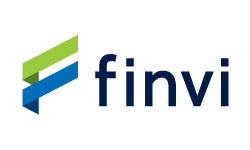Source: site

The credit card industry, which is struggling with lower payment fees, has encountered another rock called real estate regulation. The credit card loan, which supported the credit card company’s performance, was included in the total debt repayment ratio (DSR) regulation in the household loan measures announced by the government in June, and its use decreased. As the trend of slowing profitability continues across the industry, it is expected that it will be difficult to avoid the “Borit Pass” in the third quarter of this year following the first half of last year.
According to the Credit Finance Association on the 17th, the balance of credit card loans by nine full-time credit card companies (Shinhan, KB Kookmin, Samsung, Hyundai, Woori, Hana, Lotte, BC, NH Nonghyup Card) continued to decline from May to August. The balance of credit card loans, which was 42.6571 trillion won in May, reached 42.4484 trillion won in August.
The reason why the credit card loan has been bent is largely due to the impact of the June 27 real estate measures. Card loans were originally used by people in need of urgent supply because they had a high interest burden and were disadvantageous in calculating credit ratings. However, as the government tightened loans to stabilize real estate prices, credit card loans, which were outside the regulation, increased significantly on the back of the demand for “spiritual” (which means raising funds by dragging one’s soul). People who lack funds even if they receive all mortgage or credit loans have used card loans that are not affected by regulations.
The problem is that in the June 27 real estate measures, the government also tied credit card loans to loan regulations. Initially, the credit card loan was not included in the DSR, which determines the loan limit, but from then on, it was considered a credit loan and entered. In addition, the three-stage stress DSR regulation, which took effect on July 1, has been added.
In July and August after the regulations were announced, the amount of credit card loans handled by major credit card companies decreased dramatically compared to the same period last year. According to Mail Business’s analysis of data from the Credit Finance Association, the amount of credit card loans handled by eight full-time credit card companies in Korea from July to August this year was 63.5489 trillion won. This is a decrease of more than 10 trillion won (15.2%) from the same period last year (74.9051 trillion won).
In particular, Woori Card and Lotte Card have decreased their handling amount by more than 30% compared to last year. Lotte Card’s card loan handling amount from July to August this year was 703.9 billion won, down 31.5% from the same period last year (1.28 trillion won), while Woori Card also fell 35.1% from 8.2032 trillion won in July to August last year to 5.3279 trillion won in the same period this year.
The problem is that credit card loans were an important pillar of credit card companies’ profits. As of the first half of this year, Woori Card accounted for 33.7%, Hyundai Card 25.8%, and KB Kookmin Card 24.3%. The credit card industry has been preserving profits with high-interest credit card loans as profitability in its main business weakened due to a cut in merchant commission rates.
However, due to the tightening of regulations, the balance of credit card loans is rapidly decreasing, and a direct hit to the profit structure is inevitable. Although it has been holding out by reducing internal costs such as reducing marketing costs and organizational efficiency, it is evaluated that this is also reaching its limit.
An official from a credit card company said, “Following the June 27 loan regulation, DSR is expected to increase and the loan limit will be reduced due to the expansion of the stress rate of 3.0% or more.”
[Reporter Kwon Sunwoo]




